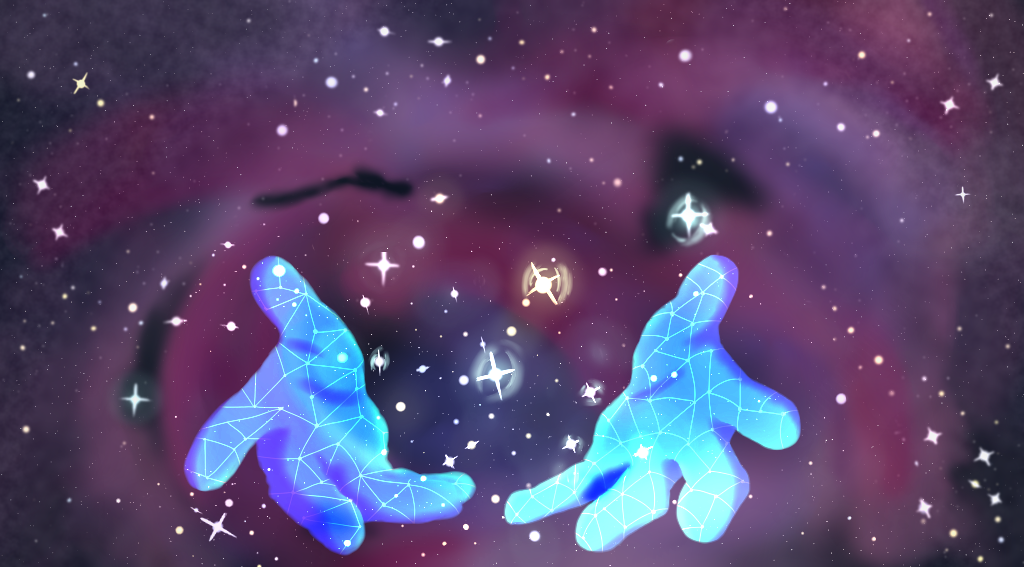A doe stumbles through the woods, blind, starving and alone. Its brain has been turned into a sponge-like structure by a simple, but deadly mistake of biology. Before death strikes, the doe will stop by a salt lick set up by a hunter to attract deer to the spot. The hunter isn’t there, and so death is postponed awhile longer. But saliva, as well as the prion it carries, is left behind on the salt lick. The cycle of infection continues.
Zombie Deer?
Chronic wasting disease (CWD) is a prion disease in deer resulting from the misfolding of a protein, breaking one of the very building blocks of the body that makes up everything from your brain to your muscles. This prion then goes on to ‘corrupt’ other proteins, increasing the likelihood of creating a prion analogous to the mutations which form cancers and tumors.
There is currently no cure or treatment for this sort of disease. Though prions are relatively rare in humans, we can still contract them, as seen from famous examples such as mad cow disease. This is also known as bovine spongiform encephalopathy, a prion that has been generally accepted to be the progenitor of the prion variant Creutzfeldt–Jakob disease (vCJD) which infects humans. Dr. Sandi Connelly, the principal biology lecturer at RIT, explained more about these prion diseases.
“Chronic wasting is a close relative of mad cow, which we’ve seen can infect humans, but we talk about it more in terms of CJD,” explained Connelly. “Prion diseases are not uncommon [in general].”
Like with cancer prions, the prions of chronic wasting disease are created by the body itself, making it almost impossible to differentiate between what is and isn’t the disease. They are also contagious like a viral or bacterial disease. Essentially, prions are the worst of both worlds to medically treat and it’s part of what makes them so scary and almost universally fatal. Although there have yet to be any documented cases of chronic wasting disease being transmitted to humans, that doesn’t mean that we shouldn’t take steps to reduce the risk of potential exposure.
Resistance
“I used to live in Wisconsin where there is chronic wasting. People would decide back there, do I want to test this, versus would I rather not know? Like [if] I think it can’t be transmitted to people, is it even worth testing or caring,” said Kaitlin Stack Whitney, a doctor of zoology and a visiting assistant professor at RIT in the environmental science program.
As there is no cure for such a disease, many states and counties have focused on altering wildlife management practices to reduce the spread of the disease. To be specific, the midwestern U.S. is where the disease is most prevalent. Some states, such as Wisconsin, have taken measures to reduce its spread by banning hunting practices like baiting.
“In places where chronic wasting [is], which is not every part of the U.S., the problem is those bait piles will actually be a reservoir for the disease — it can be passed by saliva. So, for example, if you put out a salt lick and a deer with the disease licks it, and another deer shows up who doesn’t have it, they can actually transmit the disease that way,” said Whitney. “So some states, and some regions of states, have actually banned [baiting].”
When chronic wasting disease was first discovered, there was a great deal of fear among hunters and consumers of venison that the meat might be infected. However, that fear eventually died down and has only recently reemerged with an increase in cases as Dr. James Tantillo, a lecturer at Cornell University specializing in the ethics of hunting, explained.
“For hunters specifically, at least when the disease was first announced, you know 10-15 years ago, there was a considerable amount of fear on the part of hunters, because of the unknown. As time has gone on I think hunters went back to their former habits, and are just sort of you know, playing it by ear,” he said.
Why Is It Back?
It has been discussed that the recent spread of CWD might be connected to an explosion in deer populations due to human wildlife management policies, which led to the overpopulation of deer in some parts of the country.
“Deer were going extinct around 1900,” said Whitney. “But there were conservation efforts at the turn of the 20th century to bring them back. Of course, now we could argue that they’ve been way too successful, right? So, often white tailed deer are now pests in many parts of the country.”
The way humans build and utilize the land has also contributed to the growth of the deer population, with the expansion of the suburbs creating the ideal environment for deer.
“Deer really love that area where forest and grass meet,” said Whitney. “And that’s what a lot of suburban areas are.”
With such an increase in deer population and the suburbs that feed their growth, an argument could be made that wildlife management policies should be changed once again to allow for more hunting.
“Ethicists work in hypotheticals a lot of the time,” said Tantillo. “If it were the case that overpopulation of deer was somehow contributing to a higher prevalence of the disease, that might be one possible argument for increased culling of deer, meaning increased hunting.”
But should we go into action just yet?
Should We Be Alarmed?
If you don’t eat venison, there’s nothing to worry about. If you do, follow the regulations of your respective region. Also, be sure to properly prepare the meat to avoid contamination with brains or cerebrospinal fluid.
“If you shoot a deer and you’re processing it in field, for example, a similar thing could be true for if you accidentally cut into the intestines,” said Whitney. “So, one of the concerns … for example, [if you] cut into the spine and release spinal fluid … do people have the information to know that if you’re processing deer, you need to do it in a way that doesn’t actually present this exposure pathway?”
As there is no cure for any prion diseases, appropriate wildlife management techniques remain our best option for containing the disease. But for now there is still ongoing research into the disease, like at universities such as Cornell.
“I know there are people working on that [CWD], you know, just the same way they’re working on the Brucellosis for cattle or for bison,” said Tantillo.
Whether or not such research leads to the development of treatments for CWD or other prion diseases, we’ll have to wait. However, a greater understanding of the dynamics of the disease could help us understand our impact on the environment as a species, and how to prevent the fate that befell our hypothetical doe.







